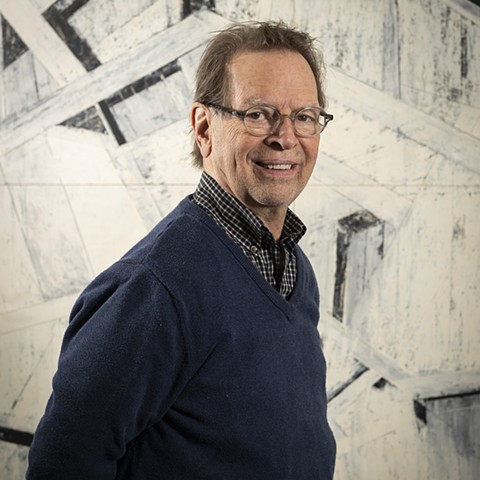Artist Statement
For a number of years, I have been investigating the contradictions between our understanding of space in the physical world and our visual perceptions. How is it that sometimes forms and space seem three-dimensional and at other times the space appears flat? In everyday life, we rapidly organize space based on our experience and knowledge. Yet at times, our perceptions confuse and challenge us.Inspiration for the structures of my work comes from architectural forms. Originally, my source material was bridges, tobacco barns, corncribs, horse farm fences, shipping crates, and wooden forms for pouring concrete. Now, while the forms in my work remain suggestive of those structures, I am less directly engaged with them. Instead, I am involved with a more direct investigation of shapes in space. The compositional strategy I use is an over-all-ness of the picture plane, with small intimate moments punctuating the design and breaking up the surface. These specific accents are juxtaposed with large iconic forms. The duality between the central iconic form and the complexity of the ground is pivotal to my work.
The imaginary and the spatial complexity in my work are based on my sense of the fragility and precariousness of contemporary life: edges seem to contain the large central mass at the same time the dominant shape appears to be expanding. The principal form presents a sense of power but one small shape added to the composition can destabilize the picture plane. Sometimes the central form is split and contains internal tensions as well. I see the works as representing our lives and struggles. Daily routines can be derailed by a slight or sometimes violet event, Even the smallest thing — a phone conversation, maybe — can cause tension, which in turns creates instability and ambiguity.
